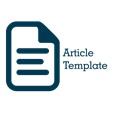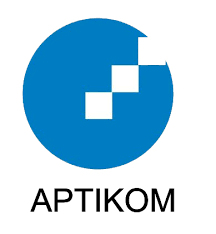Quick Menu
Submissions
Submission Preparation Checklist
As part of the submission process, authors are required to check off their submission's compliance with all of the following items, and submissions may be returned to authors that do not adhere to these guidelines.- The submission has not been previously published, nor is it before another journal for consideration (or an explanation has been provided in Comments to the Editor).
- The submission file is in OpenOffice, Microsoft Word, RTF, or WordPerfect document file format.
- Where available, URLs for the references have been provided.
- The text is single-spaced; uses a 12-point font; employs italics, rather than underlining (except with URL addresses); and all illustrations, figures, and tables are placed within the text at the appropriate points, rather than at the end.
- The text adheres to the stylistic and bibliographic requirements outlined in the Author Guidelines, which is found in About the Journal.
- If submitting to a peer-reviewed section of the journal, the instructions in Ensuring a Blind Review have been followed.
Big Data
Big Data: Data Warehouse, Data Mining, Data Sciences and Analysis, Business Intelligent, Data Management.Internet of Things
Internet of Things: Networking, Security, Privacy, Communication, Data Distribution, Intelligence Smart Analytic, Automation, Decision, Ecosystem Communityy, Sensor Devices, Parallel Computing, Modelling and Simulation, Distributed computing.Software Engineering
Software Engineering: Design, Development, Testing, Maintenance, Management, Quality, Tools and Methods, Financial Technology, Geo-tagged content and sensor data, Web APIs, Cloud Services, Assessment and Testing.Intelligent Systems
Intelligent Systems: Machine Learning, Signal Processing, Image Processing, Computer Vision, Machine Vision, Automation.Copyright Notice
-
This article contains no violation of any existing copyright or other third-party rights, nor does it include any material of a libelous, confidential, or otherwise unlawful nature. The author(s) shall indemnify and hold harmless the Editor and the Publisher against all claims and expenses (including legal costs and expenses) arising from any breach of this warranty or any other warranties made on behalf of the author(s) in this agreement.
-
The author(s) have obtained permission for, and acknowledged the source of, any illustrations, diagrams, tables, or other material included in the article of which they are not the copyright owner.
-
On behalf of any co-authors, the corresponding author agrees to this work being published in Emerging Information Science and Technology as Open Access and licensed under a Creative Commons Attribution 4.0 International Licence (CC BY 4.0) https://creativecommons.org/licenses/by/4.0/legalcode. This licence allows for the widest possible distribution and re-use of the work for the advancement of scholarly communication.
-
The author(s) agree to partially transfer the copyright of this work to the Publisher, specifically the right to publish, reproduce, and distribute the article in any form or medium, while retaining the moral rights and certain reuse rights as defined under the CC BY 4.0 licence.



